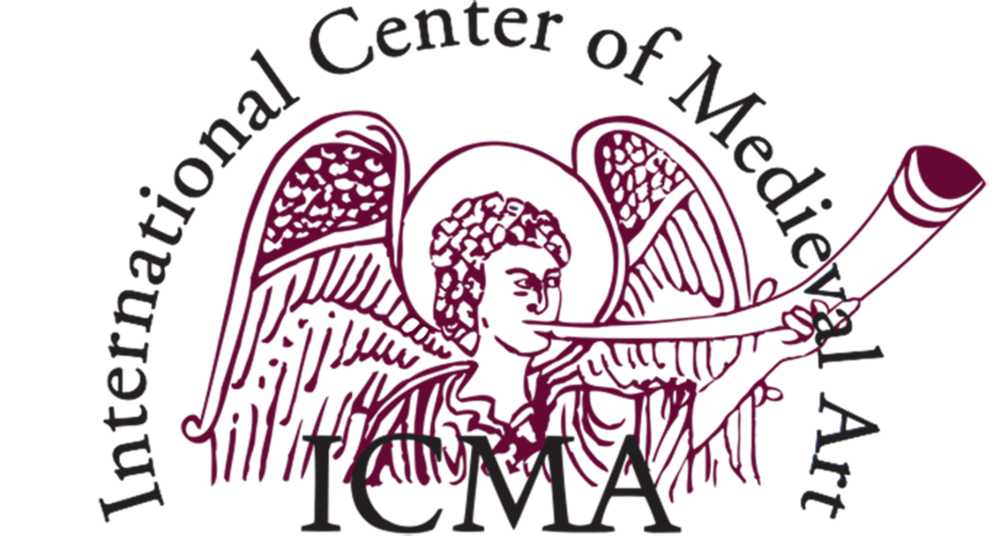ICMA at the Association for Art History’s 48th Annual Conference
6-8 April 2022
Digital Event
Rethinking Royal Manuscripts in a Global Middle Ages
Thursday, 7 April 2022, Day 2
All day session, 9:55 - 17:15 BST
Click HERE for full conference website
Badr al-Din Lu’lu’ Enthroned, frontispiece in Kitāb al-Aghānī (Book of Songs) of Abu al-Faraj al-Isfahani (Istanbul: National Library of Turkey [Milli Kütüphane]), ca. 1218
Organized by
Jacopo Gnisci, University College London
Umberto Bongianino, University of Oxford
This panel sets out to examine and compare the impact of royal patronage on the visual, material, and textual features of manuscripts produced across Africa, Asia, Mesoamerica and Europe during the ‘Global Middle Ages.’ As polysemic and multi-technological objects, royal manuscripts were produced in different forms and sizes, and from a variety of materials that could vary according to the taste, wealth, ideology, religion, and connections of their patrons and makers. Their visual and textual content could conform or deviate from existing traditions to satisfy the needs and ambitions of those involved in their production and consumption. Finally, pre-existing manuscripts could be appropriated, restored, enhanced, gifted, and even worshipped by ruling elites for reasons connected with legitimacy and self-preservation, becoming powerful instruments of hegemony, or symbols of prestige and piety. Because of this semiotic versatility, written artifacts provide ideal vantage points for understanding the agency of material culture in the creation and perpetuation of political power.
To what extent do the materials, texts, and images of royal manuscripts reflect the integration of pre-modern courts in networks of patronage and exchange? In which ways were these features adapted for different audiences and for female, male, or genderqueer patrons? How did they inform local and transregional notions of power and authority? How did communities that opposed royal authority situate themselves in relation to the political agency of written texts and their illustrations? When and how did such artifacts become imperial relics to be displayed, or symbols of a contentious past to be concealed or destroyed? What can manuscripts tell us about the royal patronage of other artistic media, dynastic rivalries, political alliances, and state-endorsed religious phenomena?
In pursuing similar questions, we are particularly interested in multidisciplinary papers that move beyond a Eurocentric reading of material culture by considering royal manuscripts from pre-modern polities traditionally seen as ‘peripheral.’ We welcome proposals that apply innovative methodologies to the study of handwritten material and its circulation, questioning conventional assumptions about politics, culture, and religion, and privileging comparative approaches and transcultural artistic phenomena.
Speakers
Western Aspirations in Royal Armenian Manuscripts from the Cilician Kingdom
Emma Chookaszian (Paul Valéry University, Montpellier)
Patronage and Political Reflections in Late Medieval Georgian Art: The Case Study of Illuminated Charters
Eter Edisherashvili (G. Chubinashvili National Research Centre for Georgian Art History and Heritage Preservation, Tbilisi)
Inside Out Borders: Production and Circulation of Aviz Royal Court Illuminated Manuscripts During the Fifteenth Century
Catarina Isabel Martins Tibúrcio (Universidade Nova de Lisboa)
A Monstrous Assemblage: Trajectories of Sovereignty in a Fifteenth-Century Ottoman Manuscript
Saygin Salgirli (University of British Columbia, Vancouver)
Noble Ladies of the Painted Page: Overlooked Expressions of Female-Led Legitimacy in a Timurid Illustrated Manuscript
Meghan Clorinda Montgomery (Independent Researcher)
Illuminating the Queen’s World: Ovide moralisé as Miroir des reines
Christopher T. Richards (New York University)
Reimagining Southern Italy in the Liber ad honorem Augusti (Bern, Burgerbibliothek, Cod. 120 II)
Elvira Miceli (Khalili Research Centre, University of Oxford)
The Power of Manuscripts or Manuscripts of Power: The Promulgation of a Visual Identity at the Ḥafṣid Court in Tunis (c. 1440 to 1468)
Laura Hinrichsen (Museum für Islamische Kunst, Berlin)

